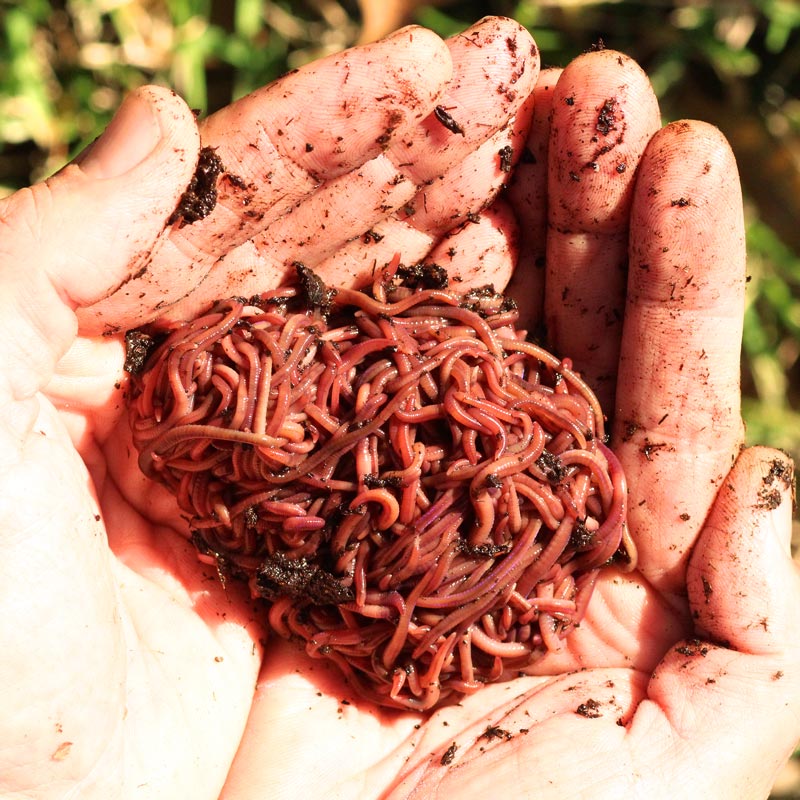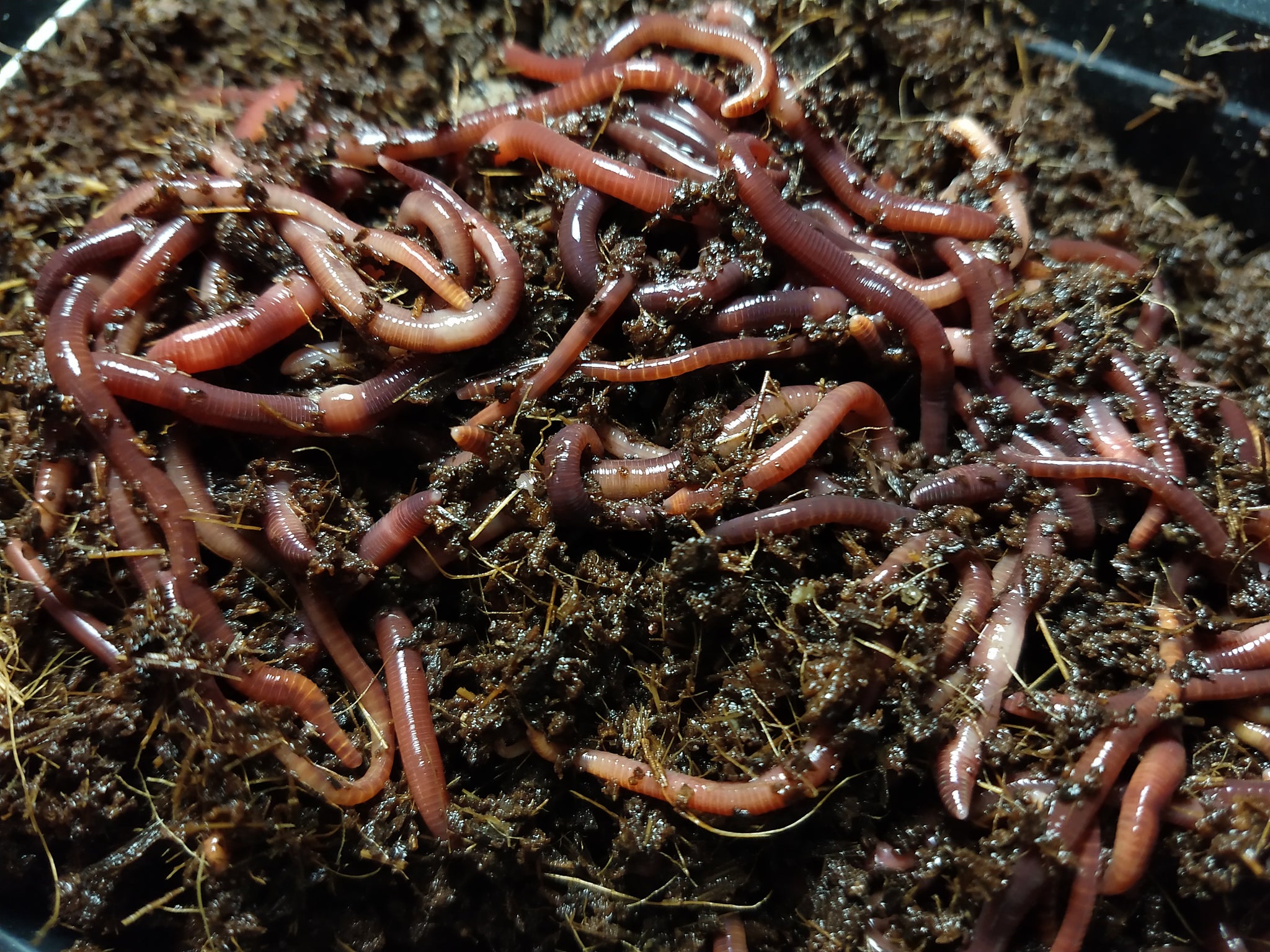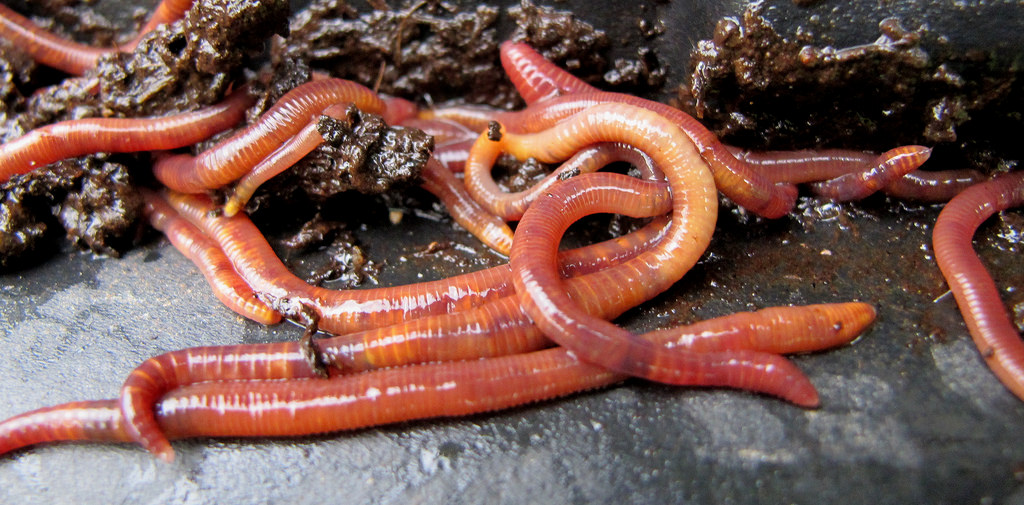Red Wigglers: The Unsung Heroes of Organic Waste Recycling
Red wigglers, or Eisenia fetida, work as essential agents in the organic waste reusing procedure, changing discarded materials right into important vermicompost. Their effective break down of natural issue not just improves dirt quality however additionally contributes to sustainable waste administration practices. As the world increasingly seeks services to fight waste accumulation and enhance farming efficiency, comprehending the function of these worms becomes essential. What mechanisms allow them to grow in garden compost environments, and just how can they be properly made use of in both domestic and business settings? Exploring these concerns discloses the wider effects of vermicomposting in our eco-friendly landscape.
What Are Red Wigglers?
The remarkable strength of red wigglers, scientifically called Eisenia fetida, highlights their important duty in natural waste recycling. These small, reddish-brown earthworms are normally located in decaying organic issue, such as compost heap and manure loads. Lake Hickory Bait. Unlike various other earthworm types, red wigglers grow in nutrient-rich atmospheres and are very efficient at damaging down natural materials, making them necessary for vermicomposting

(Red Wiggler Express)Along with their function in waste decrease, red wigglers add to soil wellness by improving soil structure and oygenation with their delving tasks (Lake Hickory Bait). Their visibility in composting systems not just enhances decay prices yet also promotes a sustainable strategy to squander administration, showing their relevance in eco-friendly preservation efforts
Benefits of Composting With Worms
Composting with worms, especially red wigglers, uses many advantages that enhance both waste management and soil health. These worms effectively break down organic waste, converting it right into nutrient-rich vermicompost that enriches soil. This procedure increases disintegration, permitting a quicker recycling of kitchen scraps and other natural products contrasted to traditional composting methods.
In addition, the vermicompost generated by red wigglers is bursting with beneficial bacteria, which help improve dirt framework, aeration, and dampness retention. This improves the overall health of plants, advertising energetic development and raised returns in yards and farming settings. The use of worms in composting reduces the manufacturing of greenhouse gases, such as methane, contributing to a more lasting waste administration system.

Just How to Start Vermicomposting
Establishing a vermicomposting system is a simple procedure that can yield substantial benefits for both waste management and dirt enrichment. To start, choose an appropriate container, such as a plastic bin or wood box, with ample ventilation holes to make sure appropriate air flow. The dimensions need to ideally be about 2 feet by 3 feet, allowing sufficient area for the worms to flourish.
Next, prepare bedding product, which can be composed of shredded paper, cardboard, or coconut coir. This bed linen ought to be dampened to create an ideal environment for the worms. As soon as the bedding is in area, present red wigglers (Eisenia fetida) right into the container, usually around one pound of worms for every square foot of surface area.
Following the positioning of worms, include natural waste, such as fruit and veggie scraps, coffee premises, and crushed eggshells. Avoid adding dairy products, meat, or oils, as these can produce odors and bring in parasites. Place the bin in a shaded, temperature-controlled location to keep ideal conditions for worm task. With these actions, you will properly launch see post a vermicomposting system that adds to lasting waste administration and enhances your dirt.
Keeping a Healthy Worm Container
(Lake Hickory Bait)Keeping a worm container prospering requires routine interest and like make certain the health of the red wigglers and the performance of the composting process. Correct maintenance starts with keeping an eye on the moisture degrees; the container must perspire but not soaked. An excellent guideline of thumb is to keep a consistency similar to a wrung-out sponge.
Oygenation is crucial. Delicately mixing the bed linen and food scraps every couple of weeks prevents compaction and makes sure that all worms have accessibility to oxygen. In addition, it is essential to feed the worms suitably. A well balanced diet of fruit and vegetable scraps, coffee premises, and crushed eggshells must be supplied in moderation to avoid overfeeding, which can cause smells and pests.
Temperature guideline is another essential facet. Red wigglers grow in a variety of 55 to 77 degrees Fahrenheit. If the bin ends up being as well hot or chilly, the worms may come to be stressed - Lake Hickory Bait. Occasionally check for signs of health, such as worm population development and the visibility of healthy and balanced spreadings. By faithfully taking care of these factors, one can preserve a robust and effective worm container.
Effect on Sustainable Living
The successful maintenance of a worm bin not only profits the wellness of red wigglers however also contributes considerably to sustainable living techniques. By recycling natural waste, such as cooking area scraps and yard debris, red wigglers help draw away considerable amounts of material from garbage dumps. This decrease in waste not only decreases greenhouse gas exhausts however also minimizes the ecological problem associated with waste monitoring.
Additionally, the castings created by red wigglers act as a nutrient-rich natural fertilizer, boosting soil health and advertising plant growth. This natural choice to chemical fertilizers sustains lasting farming and gardening techniques, minimizing dependence on artificial inputs that can harm communities. Furthermore, worm composting promotes understanding of waste management, motivating people and communities to embrace more lasting practices.

Final Thought
In recap, red wigglers work as essential contributors to organic waste recycling with their effective decay of organic products. Their capability to create nutrient-rich vermicompost improves soil health and wellness and sustains sustainable farming techniques. By incorporating vermicomposting right into waste administration techniques, individuals and communities can significantly minimize waste while promoting environmental sustainability. The function of Eisenia fetida in promoting healthy and balanced ecosystems emphasizes the significance of these microorganisms in attaining lasting living and improving dirt fertility.